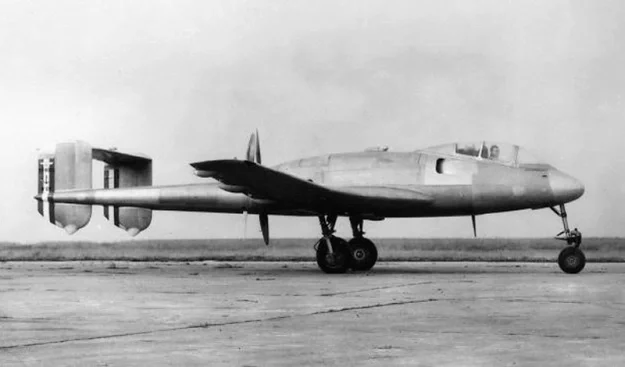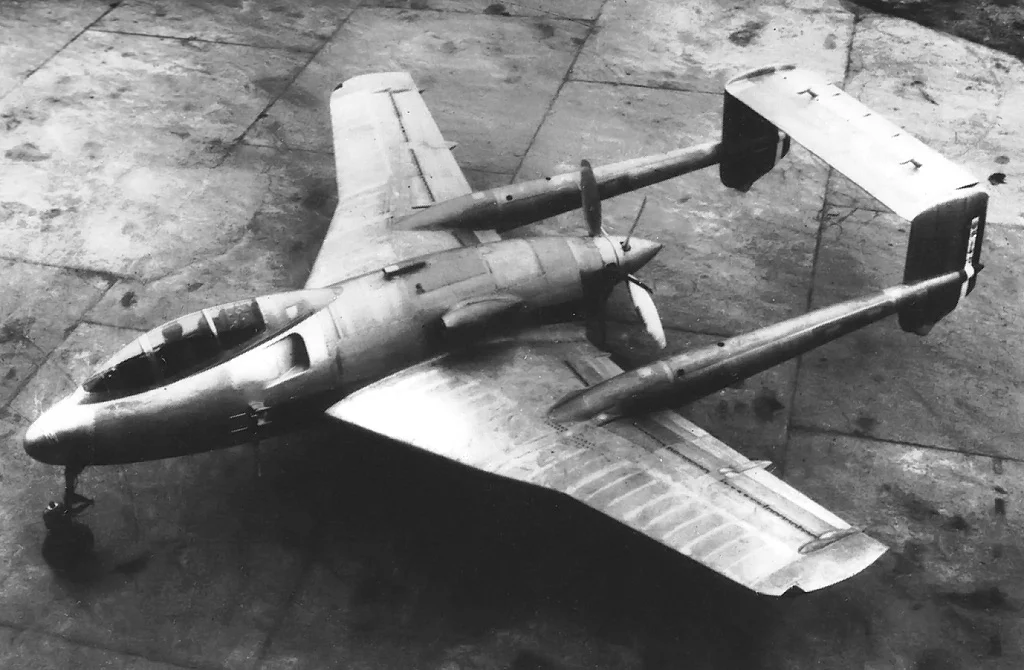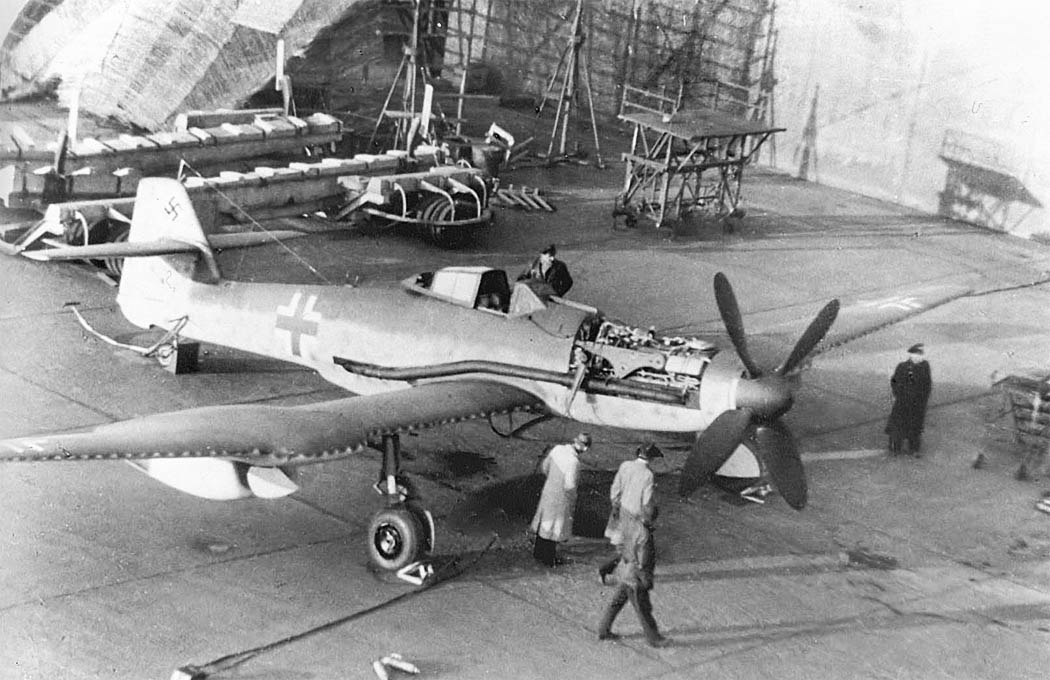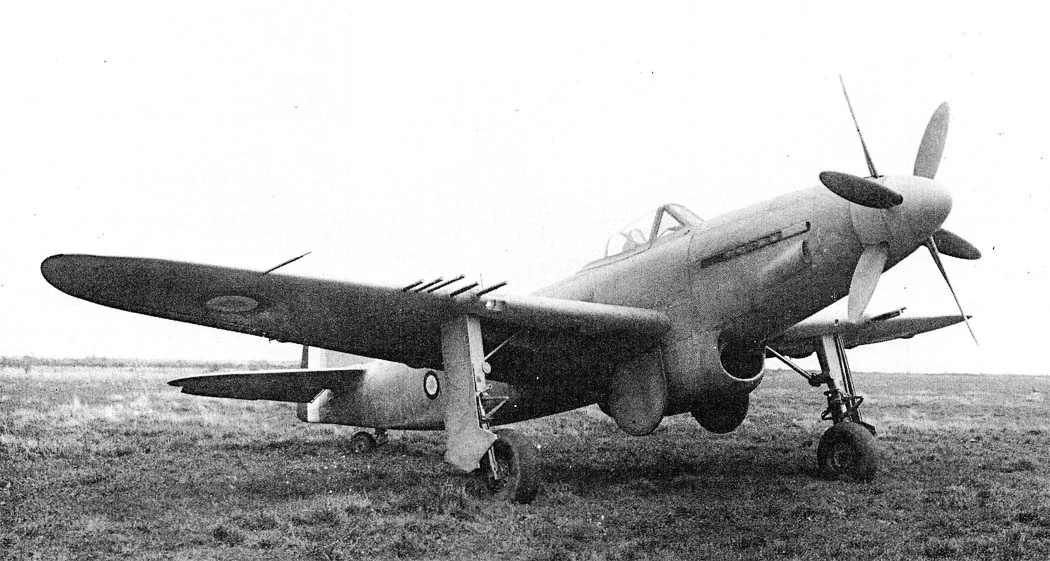TheSud-Ouest SO.8000 Narval, named after the narwhal, was a French naval strike fighter developed by Sud-Ouest in the late 1940s. Commissioned by the French Navy (Marine nationale) with two prototypes in 1946, these aircraft first took flight three years later.
However, they faced significant challenges, including aerodynamic difficulties and reliability issues with their piston engines. The Narval was hindered by slow speeds, inadequate lateral and longitudinal stability, and was deemed unfit for carrier-based operations, leading to the decision not to proceed with production.
The Narval featured a distinctive twin-boom design, incorporating the cockpit, engine, and armament within a sleek fuselage nacelle. The cockpit offered superior visibility, achieved through a high seat position and a low-cut canopy base. At the rear, it was equipped with two three-bladed propellers in a “pusher” configuration, designed to push the aircraft forward rather than pull it.
Contents
Design
The SO.8000, designed by Jean Dupuy, was an all-metal aircraft. Its wing design featured a 24-degree sweptback inboard leading edge, while the outboard section had a 13.5-degree sweepback and included a dihedral angle.

To facilitate carrier landings, it was equipped with large double slotted flaps to reduce landing speed. Roll control was managed through a combination of small ailerons at the wingtips and spoilers.
The aircraft’s distinctive twin booms, extending from the inner wing sections, each held a fin extending above and below. A horizontal stabilizer connected the two tails, mounted near their tops. The elevator on the second prototype, which flew first, extended beyond the vertical tail fins and featured a horn balance.
Read More: The Sud-Ouest Triton Experimental French Jet Aircraft
The pilot’s bubble-style sliding canopy was positioned near the front, offering exceptional visibility. Air intakes for the radiator were located behind the cockpit on both sides, with cooling air exiting around the spinner of the eight-blade contra-rotating propellers. The air intake for the Arsenal 12H engine was on the upper left side of the rear fuselage.
Arsenal, lacking time to develop a new engine, modified the German Junkers Jumo 213A to create the 2,100 hp (1,566 kW) 12H engine. This inverted V-12 engine had a 5.9 in (150 mm) bore, a 6.5 in (165 mm) stroke, and a displacement of 2,135 cu in (35.0 L).
Ejector Seat
Seeking more power, Arsenal boosted the 12H’s output to 2,250 hp (1,678 kW), which led to some reliability issues. In 1948, when Arsenal’s aircraft engine division was integrated into Société nationale d’études et de construction de moteurs d’aviation (SNECMA), the engine was renamed the SNECMA Arsenal 12H.

On 31 May 1946, the French Navy ordered two SO.8000 prototype strike fighters for its aircraft carriers, with plans for five pre-production models and sixty-five production aircraft if the prototypes proved successful.
Jean Dupuy’s design featured a twin-boom pusher configuration with a crescent wing and tricycle landing gear. The horizontal stabilizer, attached at the tops of the vertical stabilizers on the booms, aimed to minimize turbulence from the contra-rotating propeller.
Read More: XF-103 – America’s Interceptor That Never Was
The pilot’s ejection seat and the aircraft’s planned armament of six 20-millimeter MG 151 autocannon in the nose, along with the capacity to carry 1,000 kilograms of ordnance under the wings, were notable features. Radar systems were to be housed in the lower front of the booms, and fuel stored between the cockpit and engine.
Dupuy initially hoped to use a British Rolls-Royce Griffon engine, but this proved unattainable. Plans to use a Hispano-Suiza 12Z were also set aside due to its developmental stage, leading to the selection of the Arsenal 12H engine, a derivative of the Junkers Jumo 213. Air for the engine’s radiator was supplied by ducts on the fuselage sides, with a prominent scoop on the left side for engine air intake.
Armaments
The first prototype, intended to be equipped with nose guns, was completed after the second, which began taxiing tests in December 1948. Test pilot Jacques Guignard‘s initial takeoff attempts in January 1949 were unsuccessful, leading to design modifications including V-shaped cuts in the booms for better takeoff posture.

After further high-speed taxi trials and enlarging the elevator, the second prototype finally achieved its maiden flight on 1 April. Subsequent modifications were made to its spoiler, elevator, and landing gear doors, with the next flight on 21 April.
Displayed at that year’s Paris Air Show, the Narval resumed flight tests, reaching speeds of 310 mph (500 kmh) but experiencing control difficulties and pitching oscillations. After engine and airframe modifications, a crankshaft failure occurred in September.
Read More: The Stipa-Caproni Was a Flying Barrel
The disappointing performance of the Chauvière propeller led to plans for a Rotol model replacement, which were never realized. In November, limited engine performance led to a maximum speed of 560 km/h, far below expectations. Service evaluation at Brétigny deemed the Narval’s performance and stability inadequate as a gun platform, and its handling during carrier landing simulations was problematic.
First Flight
The first prototype’s maiden flight on 9 December revealed challenges in maintaining level flight. Further flights confirmed these issues, including difficulty performing an aileron roll at 460 km/h. Differences in behavior between the prototypes were noted when flaps were retracted.

Flight testing concluded on 7 January after limited flight time, and the Narval program was cancelled in April. The program’s end was influenced by the American delivery of Grumman F6F Hellcat and Vought F4U Corsair carrier fighters and the shift towards turbojet-powered French fighter projects, rendering the Narval obsolete.
A proposal by SNCASO in October 1948 to replace the Arsenal 12H with a Rolls-Royce Nene turbojet in the SO.8010 variant did not alter the program’s fate.







